During our trip through Southern Colombia, we visited a UNESCO World Heritage Site known for its large concentration of archeology sites including Parque Alto de los Idolos. We enjoyed our time here so much, we extended our trip in order to see more. This is the third article in our series on the archeology sites in San Agustin and Isnos, Colombia.
Parque Alto de Los Idolos
Alto de los Idolos is much larger than Alto de las Piedras and includes significant changes to the landscape to create the approximately 200 yard-wide half moon or bull horn shape seen in the photo below:

According to the information at the park, the two mesitas or terraces on either end of the park are natural hills. The ancient peoples of this region leveled and connected the two via an artificial embankment, creating a ceremonial landscape. Ruins suggest that humans began using this space more than 2500 years ago, approximately 1000 BCE to 1530 CE. Researchers believe most of the ten burial mounds were constructed from 1 to 900 CE.

Additional Details about Parque de los Idolos
It is very hard (at least for me) to visualize how these mounds were originally discovered. This diagram shows the basic structure of the burial sites; a statue under or before a dolmen (templete in the image below), a grave, and then a burial mound. One additional element here, not seen at Alto de las Piedras, is the use of sarcophagi, or a cover-stone, in some of the mounds.

So What Can You See at Parque de los Idolos?
With ten mounds and more than twenty burial sites, there is a bunch of stuff. Let’s start at the eastern Mesita B, which interestingly has two burial sites but no burial mound and head west. This is the same way we walked the grounds.
Mesita B – Hip Deep in Crocodiles
The most interesting feature of the two tombs found on this side of Alto de los Idolos is crocodile statues. Archeologists Luis Duque and Julio Cubillos, during their expedition of 1974-1975, noted that crocodiles are not found in this part of Colombia. One theory is that these crocodiles signify that the person buried in this spot was born further east in the Amazon Basin or traveled within the extensive trade network that linked this area to another with these animals. We did not see any other examples of crocodiles in any of the other sites in the park.


Another unusual feature of Tomb 2 is the placement of the crocodile on top of the grave versus alongside (as in Tomb 1) or as a guardian in front of the grave.


The other animal figures seen in Tomb 2 were not originally included in that site. They were collected from other, unspecified locations on the Mesita B.
The middle way and Mound 10
Between Mesita B and Mesita A is an artificial embankment. Ancient workers used the material removed during the leveling of the two hilltops to construct this large crescent-shaped space. Not just a passageway, the embankment includes burial mounds and tombs.


Mound 10 is the only one with a view of the actual size and layout of Alto de los Idolos. In the photo below, the shelter on the right holds the dolmen and statue. The one on the left holds the actual tomb.

The statue in this mound is similar to the ones seen in Alto de las Piedras. It represents a realistic people versus a mythological human-animal figure. Note that the headband, wristbands, and beaded necklace are identical to the ones seen at Alto de las Piedras. In spite of this, the scientists conjecture that there was little contact or overlap between the two societies.

The giant of the park
Also found along the embankment is the largest statue in the San Agustin/Isnos region. More than 21 feet tall, this statue includes a headband, a wristband and a necklace. Furthermore, it also has the jaguar teeth of a mythical figure. It stands upright, overlooking a tomb at its feet. Given its size and animal features, one has to wonder if this statue is meant to protect the tomb from the outside world or to protect the world from whomever is buried here. Unfortunately, the tomb was plundered in 1936 and has not been reconstructed for display, so we can only wonder at how its size and shape.


Mestia A – Full of history
On the far side of the embankment, up a slight hill, we find Mesita A. This site has the second highest concentration of burial sites in the region. There are 9 burial mounds with many tombs containing approximately 20 statues. They are a mix of the single dolmen-style mounds like those found in other locations and mounds with multiple graves. This area also contains the only sarcophagus lid found in San Agustin or Isnos.
Mounds 6 and 7 are different
These two mounds have three (Mound 6) and four tombs (Mound 7) each. This is unusual for the mounds in the park which typically have only a single burial site. There were no statues found in these two mounds. Mound 6 has only one dolmen style tomb with a sarcophagus, the other two are more simple grave structures.

Mound 7 was extensively plundered in the 1930s, prior to the inclusion of this site into the national park. As you can see below, the dolmen in this mound is extensive and consists of fairly large stones. Two of the four tombs in this mound were re-buried during the renovation process and are not shown.

Animal-like statues
As we noted at Alto de las Piedras, some statues found in the park are a mix of animal and human characteristics and some are just human. On Mesita A, only one statue is strictly human. The rest are, to varying degrees, mixtures. The following are more animal than human. One has to wonder what they represented to the people who carved them.



Jaguar Man
This impressive statue guards one of the larger mounds of the mesita. Like many of the statues, Jaguar Man wears a headband, wristbands, necklace, and waistband. Unlike many other statues, it holds two items. While it is difficult to tell exactly what these items are, they are likely a paleta and a calero, tools used while chewing coca leaves. The paleta is used to remove lime from the calero. Small amounts of lime were placed in the mouth with the coca leaves to lower the acidity. These items were important in many pre-Colombian societies and often portrayed in art.


According to another person viewing the statues during our visit, the number of teeth between the jaguar fangs signifies the power of the statue in the builders’ mythology. If so, this figure was one of great power as there are 22 teeth between its fangs. In contrast, the largest statue in the park has only eight teeth between its fangs.

The Sarcophagus Lid
As we travel, sometimes a very specific thing will really catch my interest. At Alto de los Idolos, it was this artifact. The only lid we were to see in any of the park sites, it is unique and super interesting. In addition, this was also the only tomb that maintained the original painting on the grave lining.

As you can see in the photo above, this person wears none of the typical ornaments or clothing of this culture. Aside from the size of the persons’ skull, this is one of the most realistic portrayals of a person to be found in the park. Given the complexity of the dolmen and grave (below), this must have been a person of great importance in the society that constructed this mound.

mound 1
The mound designated number one on the park map is also the oldest in the park. Carbon dating of the tomb place its construction at more than 2000 years ago. Or, put another way, this mound could have been built 900 years before the last mound on this site.

The difference in age is apparent in a number of the elements of the dolmen and mound structure. For example, this is the only mound with two dolmens with statues and the only one in which one of the pillars of the dolmen is carved. One has to wonder if the carving has special significance or is simply a failed statue that was recycled to hold up the roof. Either way, it is a compelling piece of work in an unusual spot.

The guardian statue is also very different from others on Mesita A in its level of detail and abstract nature. The animal in this statue’s arms and the «squirrel tail» one can see over its right shoulder are unique in the parks’ collection of works. Check out the close-up photo below to note these details.

The second statue on Mesita A is also one of a kind. The most humanistic of all the statues, it lacks any societal ornamentation except for the woven headband. It is also the only statue holding a weapon, in this case a spear. Given the time and effort required to create this statue and dolmen, it held great importance to this culture. Unfortunately, given the extensive looting that took place and the lack of additional historical record, we can only guess.


All in all, this was a great experience in a beautiful location. To end it all, outside the park gates we meet Alvaro, a huge fan of the Beatles and Pink Floyd.


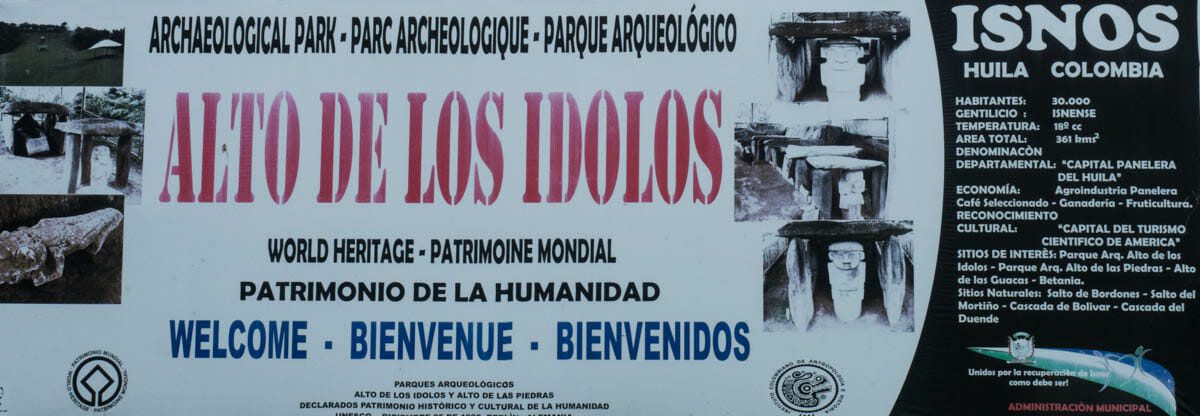
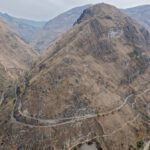

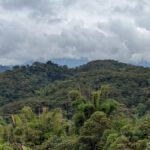

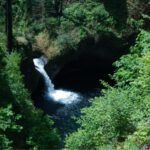



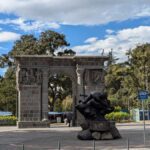


0 comentarios